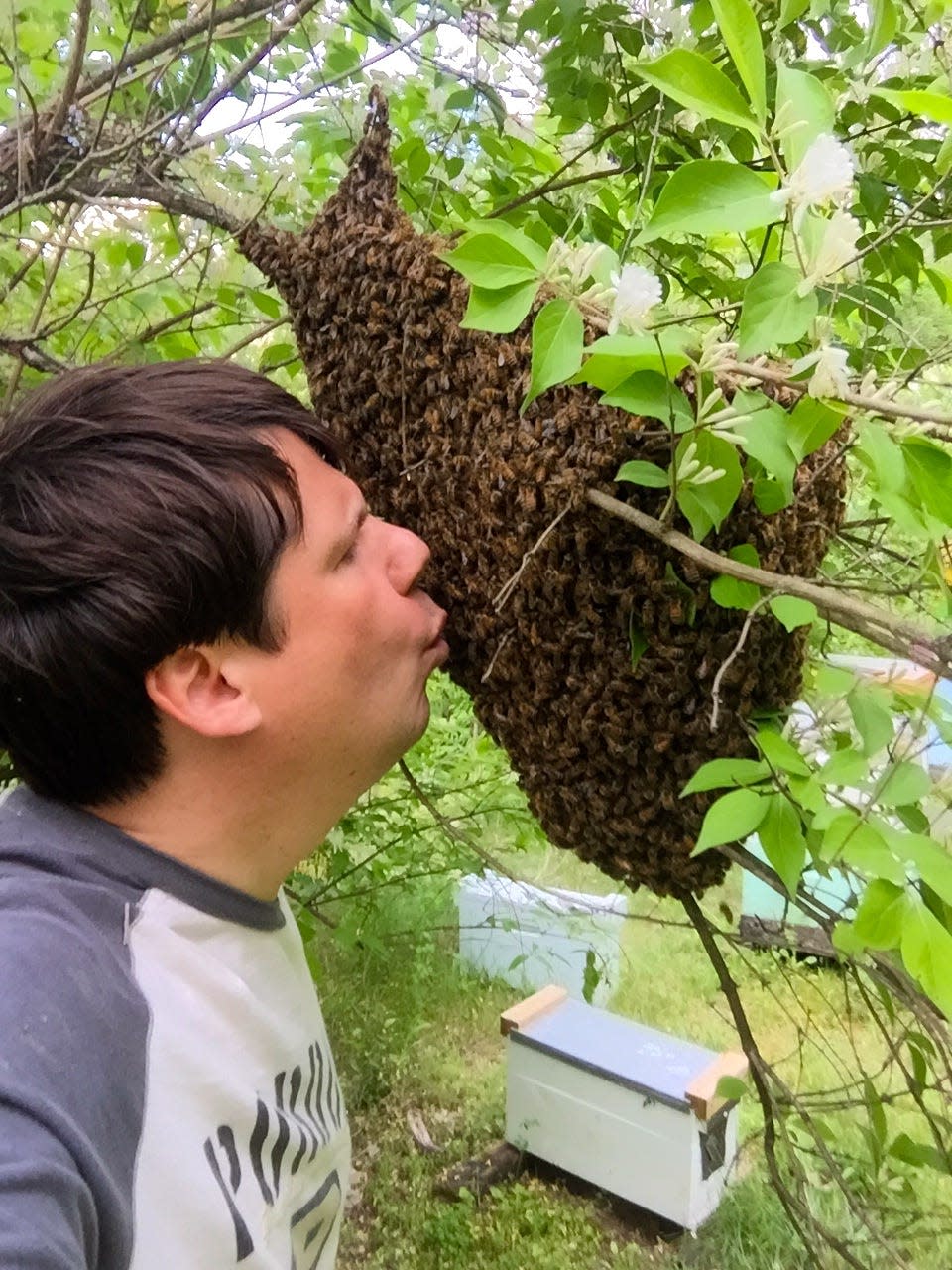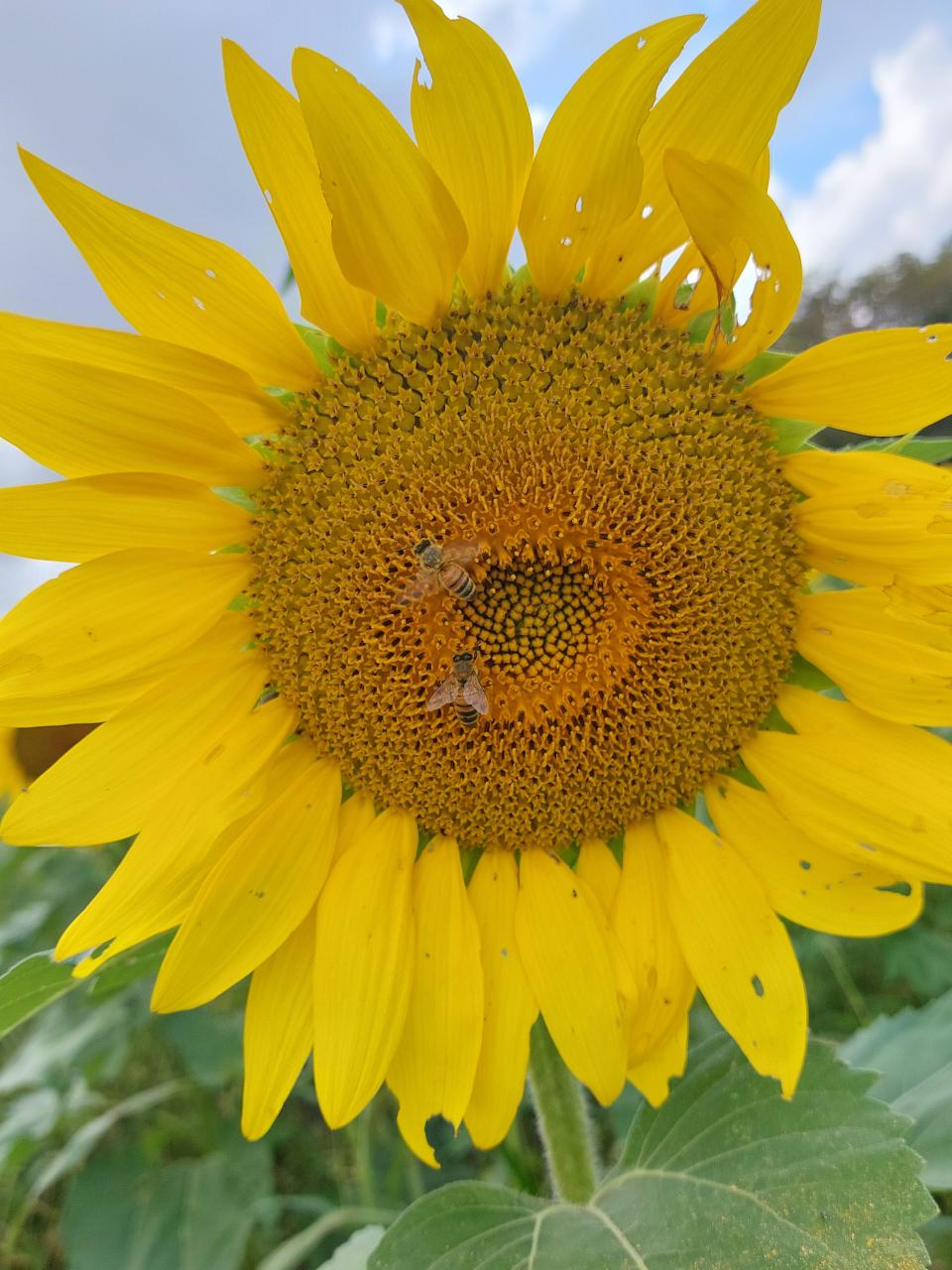BSU sustainability project: Many threats to modern bee populations exist in the Midwest
Editor's Note: The following is part of a class project initiated in the classroom of Ball State University professor Adam Kuban, who challenged his students to find sustainability efforts in the Muncie area. Several such stories will be featured in November.
Honey bees, while small and easy to forget about, play a vital role in our agriculture and food supply.
“More bees mean more pollination, greater crop yields and a healthier ecosystem; whereas, a decline in bee populations is a sign of a sick Earth. Ninety percent of the plants on our planet require pollinators to transfer pollen and help them reproduce,” said Savannah Pugh, a researcher for the American University Washington College of Law.
Every year, farmers spray their crops with pesticides, and beekeepers will spray their hives to protect them from parasites. These pesticides can have fatal effects on the entire bee colony, experts say.

“Honey bees can come into contact with chemicals and return them to their hives,” says “Scientific Reports” researcher Joseph Milone. “As a result, pesticides can become sequestered within the honey and wax. Beekeepers can apply their own chemicals to hives for the treatment of disease and parasites, which can influence a colony’s environment long after their application.”
Ball State sustainability project: Cover crops save money and the soil
The largest threat to bee populations comes from the Varroa Mite, or the Varroa Destructor, as Purdue University’s apiculture specialist Krispn Given calls it. This parasite attacks the bee’s bloodstream, which leads to a high mortality rate. The mite attaches itself to a bee and spreads infection throughout the hive.
“The last decade has been particularly alarming. In fact, the last two years are averaging around 40% mortality,” said Given. “The consensus among most scientists today is the number one factor associated with colony mortality is the Varroa Mite.”
A study conducted in 2017 by Pugh and the Washington College of Law found that “42% of beekeepers report that their bees have been affected by mites. The Varroa Mite came from China, and bees in the United States have no immunity to it.”
As talk of climate change continues to dominate scientific conversations, the bees are feeling the effects of the changing weather patterns. The Fourth National Climate Assessment, published by the U.S. Global Change Research Program in 2018, predicts that the Midwest will start to see a decrease in crop yields of around 25%.
Bees are vital to ensuring that crops are able to produce their highest yield.

The Climate Assessment also points out that the Midwest is expected to see at least 60 days that are above 100 degrees. Bees are not fans of extreme heat. Sarah Corbet, author of “Small Bees Overheat in Sunlit Flowers: Do they Make Cooling Flights?” in 2016, concluded that bees are susceptible to overheating while pollinating.
“Bees in flowers become hot. The temperature of a bee in a flower can sometimes exceed 111 degrees,” Corbet said. This extreme internal temperature can lead to heat stress and death.
Bees must be protected, and there are some relatively easy ways to help protect them.
“Start planting bee-friendly native plants in your flower beds, gardens and fields with floral diversity blooming from spring to fall,” Given stated. “Farmers should consider planting cover crops such as rye and wheat. Beneficial plants like clover could also be planted along our railroad tracks and highways.”
This article originally appeared on Muncie Star Press: Ball State sustainability project: Threats to modern bee populations

